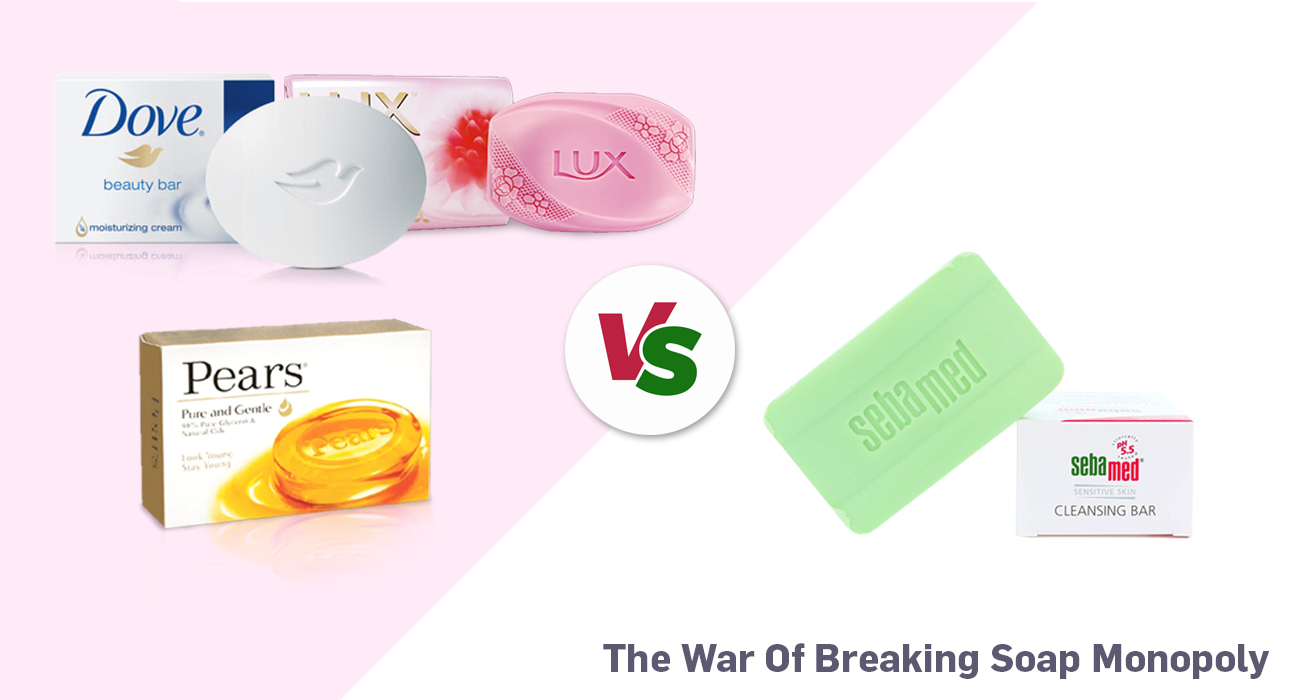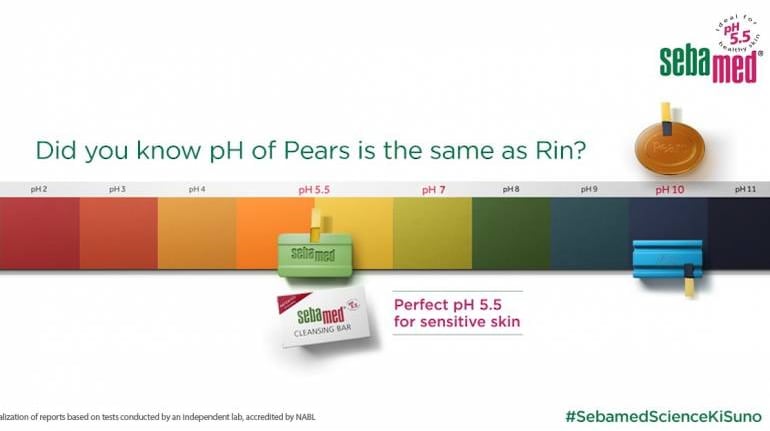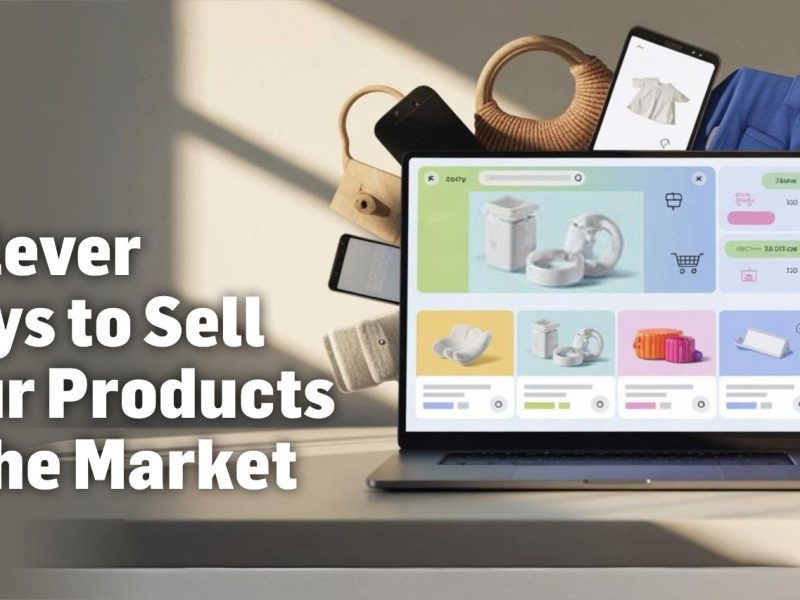
David Vs. Goliath: The War Of Breaking Soap Monopoly
The capitalist market is often run on the concept “If it ain’t broken, why fix it?”. Brands who have already made a name for themselves reap benefits for eternities to come, and outsiders aren’t generally welcomed easily. That’s why companies like Reliance, Nestle, Hindustan Unilever, Britannia, etc., dominate over 90% of India’s consumer market.
So what happens when a lesser-known brand, instead of adjusting itself, challenges a duel with the dominant brand, which controls almost the entire market? That’s precisely what Sebamed pulled off by mentioning its competitor’s name in its new campaign ad.
David’s Declaration Of War
HUL, the gigantic brand with its beak dipped in all categories of the consumerist market and controls the big guns in the soap industries like Lux, Dove, Pears, Liril, etc., is now in a soup. Sebamed directly disparaged HUL’s soap brands in its latest ad campaign.
According to Sebamed’s new focus topic to win over consumers, soaps should ideally have a pH level of 5.5 to support the skin’s natural protective layer. The ad video it’s circulating compares the pH level of various HUL’s soap with its own. While Sebamed always scores a perfect 5.5, other brands like Dove, Lux, and Pears range in 7 to 10.
According to Sebamed’s new focus topic to win over consumers, soaps should ideally have a pH level of 5.5 to support the skin’s natural protective layer. The ad video it’s circulating compares the pH level of various HUL’s soap with its own. While Sebamed always scores a perfect 5.5, other brands like Dove, Lux, and Pears range in 7 to 10.
This started an uproar, and people quickly noticed how a non-existent brand is poking the HUL giant. Their ad started trending on the internet while #Sebamed erupted on Twitter and became the market’s trendy topic.
Goliath’s Retaliation
HUL didn’t stand back and just watched. It retaliated by summoning Sebamed to Bombay HC and put a hold on the ads of Sebamed. And THAT… was when it lost the first battle.
When a market leader, with 40% of market holding, retaliates to a challenger brand’s threats, the smaller brand has been heard and noticed in one stroke. The challenger brand now gets more mileage than ever, and the market leader is currently on backfoot because it responded.
That’s what happened with HUL, more or less when it filed a legal case that put a temporary hold on Sebamed’s ad campaign, along with releasing its own advertisement that claimed Dove (one of HUL’s soap brands Sebamed attacked) is trusted by dermatologists. It got people thinking that “If Dove got nothing to be afraid of, why did it file a case against Sebamed?”
The “Science” Behind Soap War
With the newfound engagement and eyebrow-raising stunts by Sebamed, half the battle was already won. But taking heads on an institutional Company is not an easy feat. You always have to think 3 steps ahead of your competitor. Without any counter move already prepared in the quiver, it wouldn’t take HUL much time to make Sebamed a forgotten brand – another newbie who dared to conquer the king of the hill and failed miserably.
Sebamed is not a small brand by any means. It has a successful run in around 85 countries. But its entry into the Indian market was relatively new (since 2007), and it lacked the focus topic that is giving it the mileage now. You see, any consumeristic item on the market has 20 other similar products with the same features and benefits. Then how do some of them manage to become household names and others miss the mark?

It’s because instead of the product or services, they sell the experience. You’d get the one-of-a-kind experience if you used the product and how “that experience” is superior to other brands. They build their target audience by focusing on that.
Lifebuoy is built around the germ-free experience, while Liril promises a feel-fresh experience. Every brand has its focus topic determined. Then comes Sebamed with the pH concept and calls out its rival for not playing by the newly created rules.
Some market pundits believe that HUL’s best response would have been if they hadn’t responded at all.
The Stand Off
It didn’t take Bombay HC long to rule in favor of Sebamed, stating that “The brand’s claims are backed by scientific evidence.” Apart from some minor wording changes, it is free to rerun its ads.
Another part that worked great for Sebamed is the society’s newfound likeness towards DIY culture. The court’s ruling wouldn’t have made any difference to the consumers if the brand couldn’t prove its claim. That’s why Sebamed started adding a pH test kit with the soap for the customers to test it out themselves – A masterstroke.

After gaining the initial mileage, the brand has changed its narration from attacking rival brands to shifting focus on its own. Now, it’s asking consumers to “Check our integrity” instead of others.
And to all this debacle, HUL has still not come up with a concrete response to clear out the fog of doubts. They have made the only move by playing it safe and propagating the loyalty they have from their customers.
Future Strategy
Clearly, David has outwitted Goliath in the first battle. But the road ahead for Sebamed is only going to get more complicated from here on. It has won the attention of consumers. But in a price-conscious country like India, keeping a Rs.199 soap bar afloat (discounted Rs.99 for now) where its rival brand pricing is around Rs.35-60, is a humongous task.
Currently, the war is far from over. HUL is yet to make its move, and that’s where things will become interesting. For now, we just have to wait and see which side consumers are gonna choose – Claims backed by science or Tried and tested favorites?
About Author
Sandeep Hati is a copywriter at Sanket Communications. He is passionate about advertising trends and stories. He aims to explain the many intricacies that run the advertising and marketing world. When he’s not working, you’ll find him buried in a book or watching period cinema or failing gloriously on the same level of video game infinitely.




